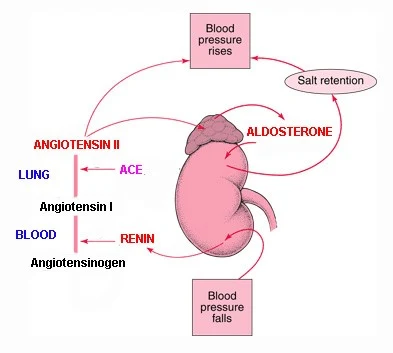INTRODUCTION: Aldosterone is the most abundant of the mineralocorticoids, and we will use it as a representative of this group of hormones. The target organs of aldosterone are the kidneys, but there are important secondary effects as well.
ROLE OF THE HORMONE IN THE BODY: Aldosterone increases the reabsorption of sodium and the excretion of potassium by the kidney tubules. Sodium ions (Na) are returned to the blood, and potassium ions (K) are excreted in urine. As Na ions are reabsorbed, hydrogen ions (H) may be excreted in exchange. This is one mechanism to prevent the accumulation of excess H ions, which would cause acidosis of body fluids. Also, as Na ions are reabsorbed, negative ions such as chloride (Cl) and bicarbonate (HCO3–) follow the Na ions back to the blood, and water follows by osmosis. This indirect effect of aldosterone, the reabsorption of water by the kidneys, is very important to maintain normal blood volume and blood pressure.
SUMMERY OF ROLES: In summary, then, aldosterone maintains normal blood levels of sodium and potassium, and contributes to the maintenance of normal blood pH, blood volume, and blood pressure.
STIMULATION OF SECRETION: A number of factors stimulate the secretion of aldosterone. These are a deficiency of sodium, loss of blood or dehydration that lowers blood pressure, or an elevated blood level of potassium. Low blood pressure or blood volume activates the renin-angiotensin mechanism of the kidneys.
Angiotensin II causes vasoconstriction and stimulates the secretion of aldosterone by the adrenal cortex. Aldosterone then increases sodium and water retention by the kidneys to help restore blood volume and blood pressure to normal.
RELATED;
1. CATALASE
2. GLUCAGON
4. BIOCHEMISTRY











No comments:
Post a Comment